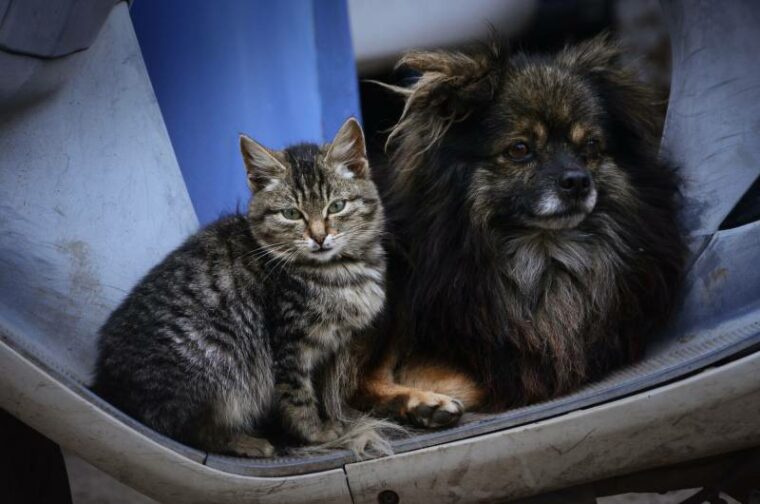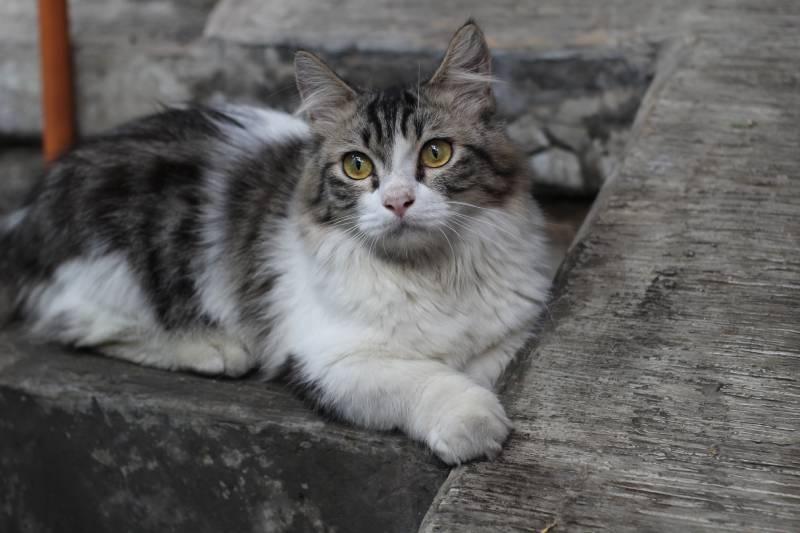
It’s no secret that cats and dogs don’t always see eye to eye. Felines are often caught hissing, growling, and hitting their adversaries. Dogs, in turn, bark, whine, and bite. However, that doesn’t apply to every single breed. For example, the Munchkin cat is a loving, caring, and affectionate pet. More importantly, it often sees canines as friends, not enemies.
And the best tool in a pet parent’s hands is, of course, early socialization. With the right approach, it’s very well possible to help the Sausage cat befriend your doggo. So, how do you build the foundation for that? We have the answers right here!
Munchkin Cats: Nature’s Wonder
Officially recognized in 1991 yet documented since the 1940s, the Munchkin is a fascinating cat.1 It has a unique physical property caused by a genetic mutation: the legs of a Munchkin kitty are 2–3 inches shorter compared to most felines. However, that doesn’t prevent it from being playful and energetic. These felines are not only fun but also smart and create very little havoc around the house.
Now, short-legged cats weren’t at all common before the 80s. However, in 1983, a Louisiana teacher found two pregnant cats seeking shelter underneath her car. She kept one of them, and most of her kittens were born with short legs, laying the foundation for Munchkins in the States. This deformation is caused by the heterozygous gene, by the way. So, a Sausage cat born without this gene will have normal-size legs.

Do These Cats Get Along With Dogs?
The short answer is yes, they do.
One of the best things about Munchkin cats is their peaceful, positive energy. They are quick to find common ground not only with humans but with canines as well. While it won’t always be “love at first sight”, Munchkins are often called the best cats to have around dogs. Most cats are afraid of dogs and either run away and hide or try to establish dominance.
That’s not the case with this breed, though. It’s naturally drawn to all God’s creatures (humans or animals). Even if you have a large doggo in the house, like a Cane Corso or a Newfoundland, it won’t really matter much. So, if you want to have both species living under the same roof, this is your best bet.
How Can You Help “Break the Ice”?
Even if you’re the proud owner of a friendly doggo like a Spaniel or Golden Retriever, you’ll still need to take certain steps to ensure a smooth integration for the Munchkin cat.

Do Munchkin Cats Take Long to Adapt?
Naturally, this breed easily adapts to new faces and environments. So, if you move to a different house, city or introduce it to new pets, the Munchkin won’t need months to get used to that. However, Sausage cats don’t like to be left alone for too long. They get attached to their favorite humans quickly and often suffer from separation anxiety.
Tips for Keeping a Munchkin Cat Safe
Another thing that makes these felines stand out is their kitten-like behavior. In contrast to most cats that mature quickly, Munchkins stay curious and playful well into their adult years. So, don’t be surprised by a fully-grown Sausage cat’s desire to explore every single corner of the house and “stash” things it likes.

Common Health Problems: A Quick Look
Munchkin cats don’t necessarily have deformed backs. Their spines are slightly shorter compared to other cats, though (due to chondrodysplasia), and they’re prone to lordosis. Some Munchkins suffer through constant pain because of this; others aren’t really affected that much. Still, this is one of the reasons why breeding Munchkins is prohibited in many countries.
Here’s a list of the most common health issues:
Conclusion
As far as the most easy-going cats go, Munchkins are right on top of the list. Charming and affectionate, they are near-perfect pets for big families. And, in contrast to most felines, they don’t automatically see dogs as a threat. If you put some effort into socialization, you should be able to turn a potential rivalry into a beautiful friendship.
Practice patience and adopt a positive attitude and you will see the fruits of your labor. While the Sausage cats are a dwarf breed, they are very curious and energetic. So, don’t rush anything, never hesitate to take a step back, and give the pets time to warm up to each other.
Featured Image Credit: Varvara_Gi, Shutterstock








